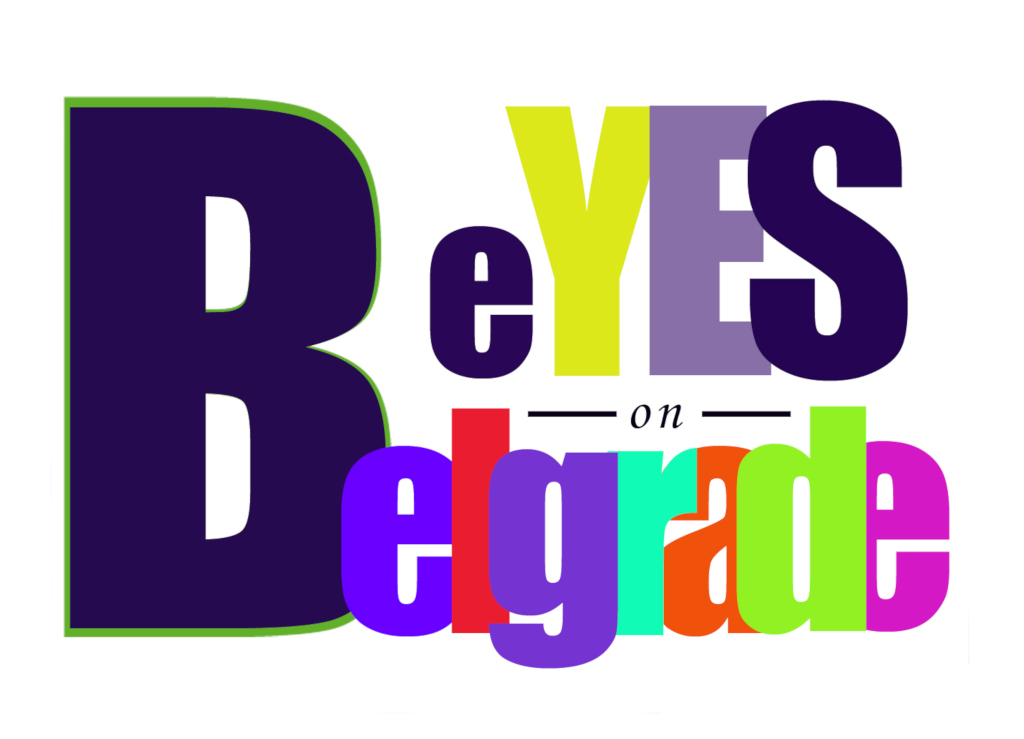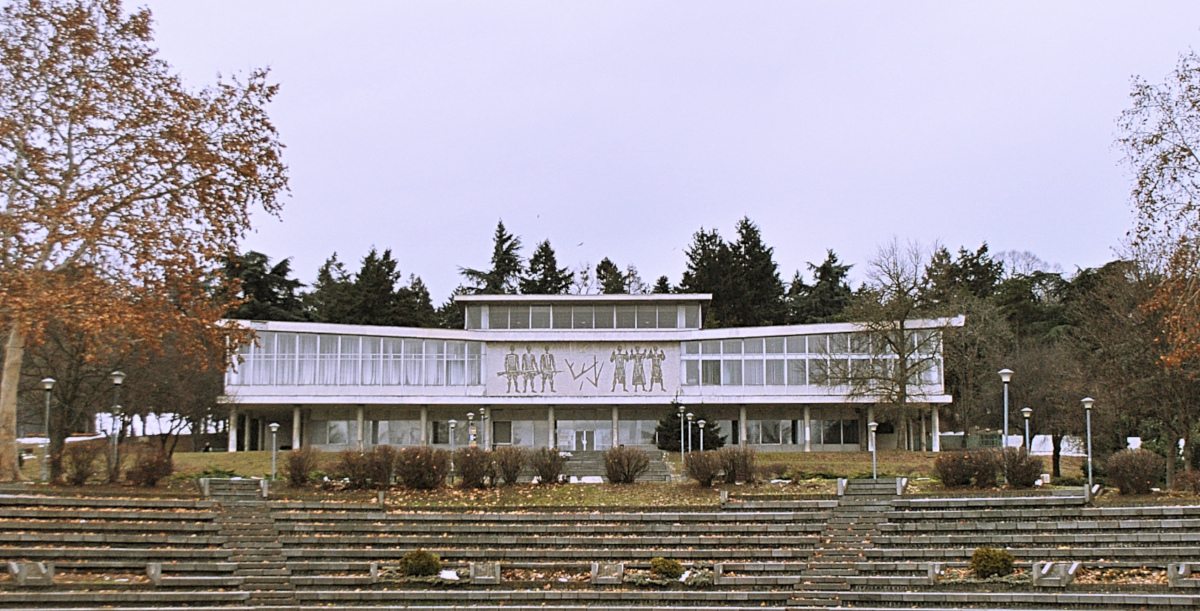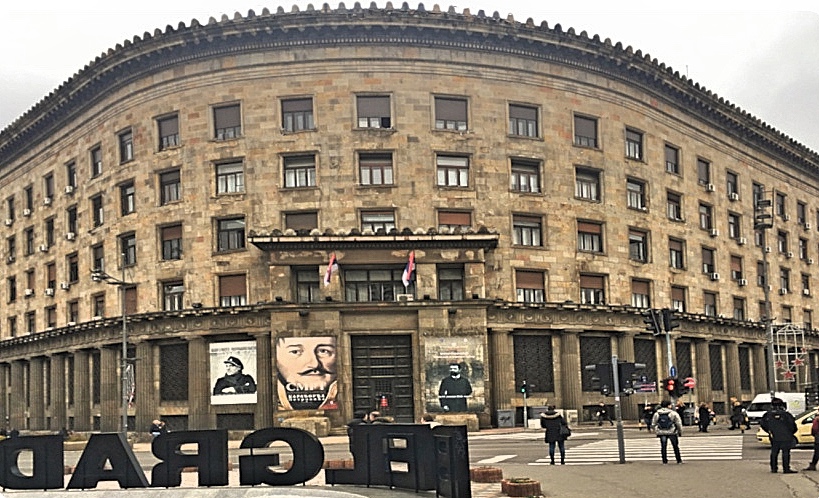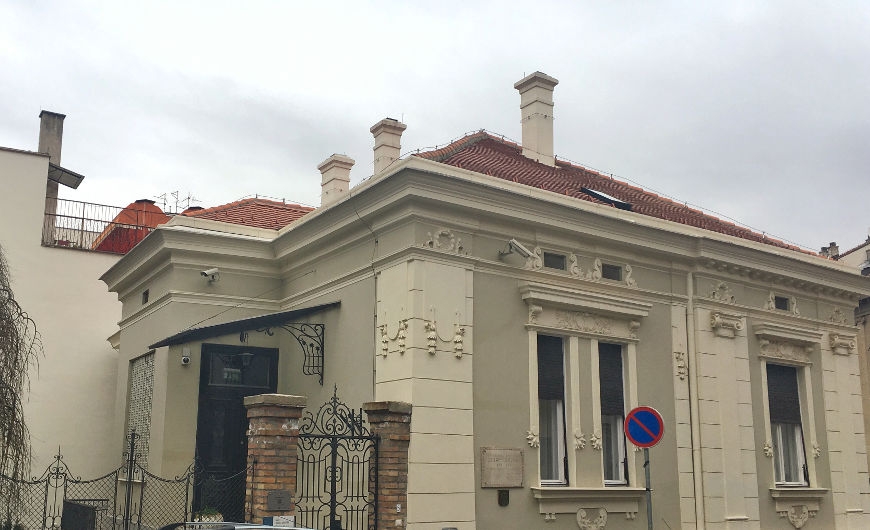We have compiled a list of the most important museums and cultural institutions Belgrade has to offer.

National Museum of Serbia
Founded in 1844, the National Museum of Serbia is the oldest institution of its kind in Serbia, celebrated 175 years of existence in 2019 with special exhibitions of Serbian most prominent painters and their masterpieces. This is advertised throughout the city, as you can see on the photo of the buildings being reconstructed and covered with panels promoting exhibitions. Today, the museum has more than 400.000 archeological artefacts, scripts, sculptures, frescos, paintings and other artistic objects. It has an impressive permanent exhibition, but it holds temporary exhibitions of great value and artistic importance as well. It represents a true national tresure.
Architectural style: Neorenaissance
Year of construction: 1903
Location: Republic square
Belgrade mummy, called "Nesmin" (which means - one who belongs to God Min), it is argued, is unique in the world becuse in the sarcophagus it contained a papyrus roll, that remained at the original spot where the priest left it - under the biceps of the left arm, close to the heart, with the entirely legible complete text of Book of the Dead (which was not the case with other mummies). Belgrade mummy is now on public display, as a part of the permanent exhibition, in the National Museum of Serbia. It is open to visitors every Saturday at noon (12pm). You can see it and find out more on the official web-site of the National Museum (this article is available in Serbian only).
| National Museum of Serbia // Celebrating 175+ years of existence | |
| Opening hours: | 10 am - 6 pm (Tuesday, Wednesday, Friday, Sunday), 12 pm - 8 pm (Thursday, Saturday), closed on Monday |
| Currently: | Sculptures of Ivan Meštrović, until February 2 |
| Admission: | 300 RSD (cca. 2.5 euros) |
| Detailed info: | Visit the Official Web-Site |
Nikola Tesla Museum
Nikola Tesla Museum was founded in 1952, and opened in 1955. The museum guards Tesla's scientific and personal legacy, and all of his belongings were moved from New York to Belgrade in 1951 following his own wish.
There is a vast documentation of Tesla's papers, letters, drawings and other manuscripts that gives us a precious insight on his work and his personal life. The museum also has a reading room with books and magazines from Tesla's personal library.
The exhibition rooms show us models, layouts and pictures of Tesla's inventions, but also his personal items.
Architectural style: Academism
Year of construction: 1927-29
Location: 51, Krunska street
Nikola Tesla is one of the greatest inventors of all times. He was born and raised in Serbian-Orthodox family, in the village of Smiljan (then Austrian Empire, now Croatia) with predominant Serbian population, but most of his life he spent in the United States. He visited Belgrade just once, in 1892. During his visit, that lasted less than 2 days, he was decorated with the "Order of St. Sava, II Class", he was received by the king Alexander Obrenović, he visited the National Museum and the University, where he gave lecture to students and professors.
"As you can see and hear, I remained a Serb even though I live far away, overseas, where I do experiments. You should do the same, with your knowledge and work you should spread the glory of the Serbian name in the world", said Tesla to the students.
Tesla's birthday, July 10th, is celebrated in Serbia as the Day of Science.
In Belgrade, Tesla has two monuments - one in front of the Faculty of Technical Sciences, and the other, newly placed, at Vračar Plateau, in front of the National Library.
Belgrade Airport is named after Tesla and is officially called "Nikola Tesla Airport".
| Nikola Tesla Museum // About the man who illuminated the world, "welcoming over 135.000 visitors annually" | |
| Opening hours: | 9.45 am - 8 pm, closed on Monday |
| Admission: | 500 RSD (cca. 4 euros) |
| Detailed info: | Visit the Official Web-Site |

Auto Museum
The Automobile Museum, Bratislav Petkovic Collection, is the newest in a series of technical museums in Serbia. The Museum was founded by the Assembly of the City of Belgrade and Bratislav Petkovic, the collector and owner of a collection comprising historically valuable cars and arhive material on the domestic history of motoring.
The Museum’s premises are situated in the Modern Garage, a characteristic monument of the technical culture of its age, itself declared a cultural asset. The building, designed by the Russian arhitect Valerij Staševski, was built in the city centre in 1929 as the first public garage. It housed the automobiles of the participants in the first international car and motorcycle race ever held in Belgrade, on September 3, 1939.
| Auto Museum Belgrade, "Modern Garage" // Representing the technical culture of its age | |
| Location: | 30, Majke Jevrosime st. |
| Working hours: | 9.30 am - 8 pm |
| Ticket: | 200 RSD (cca. 1.7 euros) |
| Detailed info: | Visit the Official Web-Site |
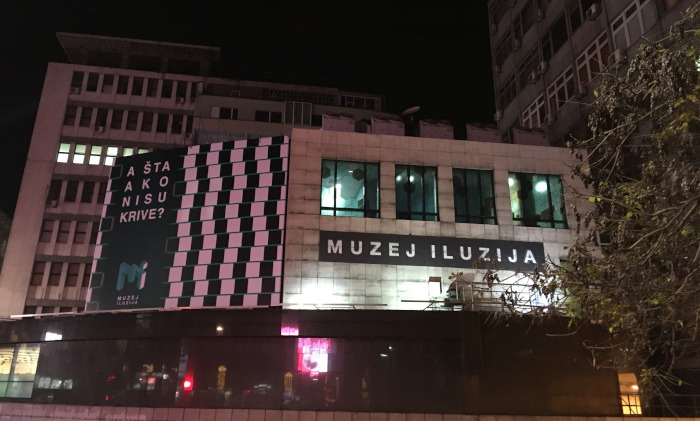
Museum of Illusions
The Museum of Illusions in Belgrade brings you a space suitable both for social and entertaining tours into the world of illusions which has delighted all generations. It’s a unique place for new experiences and fun with friends and family. Not only is it a place for children who adore coming, but also a place for parents, couples, grandmothers and grandfathers. Simply a place for everyone!
| Museum of Illusions // "Ready for an adventure? Explore the world of illusions and experience the impossible!" | |
| Location: | 31, Nušićeva st. |
| Working hours: | 9 am - 10 pm |
| Ticket: | 600 RSD (cca. 5 euros) |
| Detailed info: | Visit the Official Web-Site |
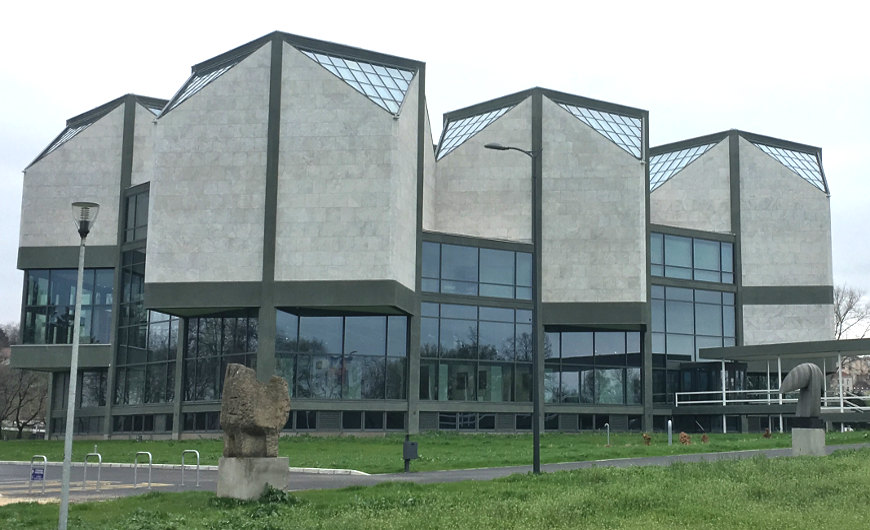
Museum of Contemporary Art
The Museum of Contemporary Art hosts a collection of Serbian and Yugoslav art from 1900 to the present day. Established in 1958, the Museum of Contemporary Art moved to the building in Ušće park (New Belgrade), near the promenade by the river in 1965. Today, the museum has more than 8.000 sculptures and paintings of Serbian and Yugoslav artists.
Architectural style: Modern
Year of construction: 1965
Location: Ušće 10, New Belgrade
Architecturally, the building of the museum is made out of six connected buildings, without inner walls in between. There are several levels, but no need for an elevator because the leves overflow. Each of those six buildings represent a pile dwelling, as the architect was inspired in such a way walking on the river bank, close to the place where the msueum was built. Narrow window panels on top represent a pretty revolutionary way to making the whole structure brighter inside.
| Museum of Contemporary Art | |
| Working hours: | 10 am - 6 pm (Sunday, Monday, Wednesday), 10am - 10pm (Thursday, Friday, Saturday), closed on Tuesday |
| Ticket: | 600 RSD (cca. 5 euros) |
| Detailed info: | Visit the Official Web-Site |
Museum of Yugoslavia
The Museum of Yugoslavia was founded in 1996 merging the Memorial Center "Josip Broz Tito" with the museum "25th of May" (photo above). It mainly depicts the history of socialist Yugoslavia, after WWII. It is said that this is the most frequented of all Belgrade's museums, and it's quite understandable. The majority of visitors come from the region of ex-Yugoslavia. Some of them are driven by nostalgic feelings, like people who long for the "good old times", while the others represent the younger generation who doesn't remember the old country but heard stories, good and bad, from their fathers, from the news, from the history lessons. For them, it is almost exotic to be here. This museum serves as a reminder that we all in this region are bounded together and that we have to learn to live in peace again.
Architectural style: Corbusian
Year of construction: 1962
Location: 6, Mihaila Mike Jankovića st.
The museum houses an invaluable collection of more than 200 000 photos, works of art, documents, films, weapons and other priceless treasure, representing the fascinating and stormy history of Yugoslavia. The main attraction of the museum is so called "House of Flowers", with Josip Broz Tito's tomb. There is also a display of his personal belongings, and gifts he received from the world leaders during his presidency. Other than that, we point out that the museum possesses a valuable collection of paintings of the prominent Yugoslav artists of the 20th century. There is also a nice ethnological display, as well as the exhibition of items in the domain of applied arts.
The museum "25th of May" was opened in 1962, as a gift to Tito on his 70th birthday. Believe it or not, this was the first museum building that was constructed in Belgrade. Other museums, up to that moment, frequently changed locations and moved into edifices originally errected for completely other purposes. On the back side of the Museum, at 15 Užička street, in the private villa of the engeneer Acović, was Tito's residence after the war. The complex itself is monumental, symbolic and comprised of lot more things than we usually think. The mosaic above the main entrance, for example, is showing us partizan fighters on the left side, and post war workers on the right. Furthermore, in the immediate vicinity there was the private villa of Serbian journalist Vladislav Ribnikar, where Tito, on July 4th, 1941, made a decision to uprise against the Nazi Germans. Nearby, we also find the Stadium of Partizan FC, where there was a great rally every year on the occasion of Tito's birthday. And finally, there are two great high-rise buildings across the street from the museum, that served almost as a shield for president Tito. In these 15-story buildings resided Tito's most faithful army officers. Ultimately, Tito was burried in this complex.
| Museum of Yugoslavia // "Perceive the present by modern interpretation of the past" | |
| Working hours: | 10 am - 6 pm (Tuesday to Sunday), closed on Monday |
| Ticket: | 400 RSD (cca. 3.5 euros) |
| Detailed info: | Visit the Official Web-Site |
Historical Museum of Serbia
The Historical Museum of Serbia is located in the very center of the city, at Nikola Pašić square, in a building that represents an architectural masterpiece. It is planned to move over the next couple of years to a another location, namely to the building of the old Main Railway Station at Savski Square.
Architectural style: Art Deco
Year of construction: 1932-34
Location: 11, Nikola Pašić sq.
At first, the building was constructed to host the Agrarian Bank, but as of 1963 it hosts a precious collection of more than 35000 pieces from Serbian history and tradition. It hosts many temporary exhibitions, as well.
| Historical Museum of Serbia // "Enabling communication between the public and the national heritage" | |
| Working hours: | 12 pm - 8 pm (Tuesday to Sunday), closed on Monday |
| Ticket: | 200 RSD (cca. 1.5 euros) |
| Detailed info: | Visit the Official Web-Site |

Princess Ljubica's Residence
Konak Kneginje Ljubice (eng. "Princess Ljubica Residence") is a building of exceptional significance. Prince Miloš (ser. "Knez Miloš") built it for his family after proclamation of the Hatti-Sheriff in 1830, which granted Serbia's autonomy. Princess Ljubica was his wife, and after her the palace got its name.
Architectural style: Balkan profane (Oriental)
Year of construction: 1830
Location: 8, Kneza Sime Markovića st.
Princess Ljubica Residence changed its purpose over the course of history, but nowadays it is a museum that gives you an insight to the interiors of 19th century houses in Belgrade.
| Princess Ljubica's Residence // "The interiors of 19th-century homes in Belgrade" | |
| Working hours: | 10 am - 5 pm (Tuesday, Wednesday, Thursday, Saturday), 10 am - 6 pm (Friday), 10 am - 2 pm (Sunday), closed on Monday |
| Ticket: | 200 RSD (cca. 1.5 euros) |
| Detailed info: | Visit the Official Web-Site |

Museum of Applied Art
Museum of Applied Art is located at Topličin Venac, overlooking Vojvoda Vuk Park and monument. It guards a precious collection of furniture, photos, ceramics, textile and other materials used for various kinds of craftsmanship.
Architectural style: Academism
Year of construction: 1929
Location: 18, Vuka Karadžića st., Topličin Venac
The museum was founded in 1950 and it guards Serbian applied arts items, but also a related material from all around the world. Originally, the building was constructed by Jakov Čelebonović, a lawyer, with the purpose of renting the appartments. Three brothers Čelebonović lived there, Jakov, Aleksa and Marko. Marko Čelebonović was one of the most famous Serbian painters of the 20th century. Their precious art collection is displayed in the museum. The building is located next to a wonderful example of secession in Belgrade's architecture - House of Milan Pavlović, and in the immediate vecinity of the classical Hotel "Palace".
| Museum of Applied Art // Permanent display of precious examples of Serbian and Balkan craftsmanship | |
| Working hours: | 11 am - 7 pm (Tuesday to Saturday), closed on Sunday and Monday |
| Ticket: | 200 RSD (cca. 1.7 euros) |
| Detailed info: | Visit the Official Web-Site |
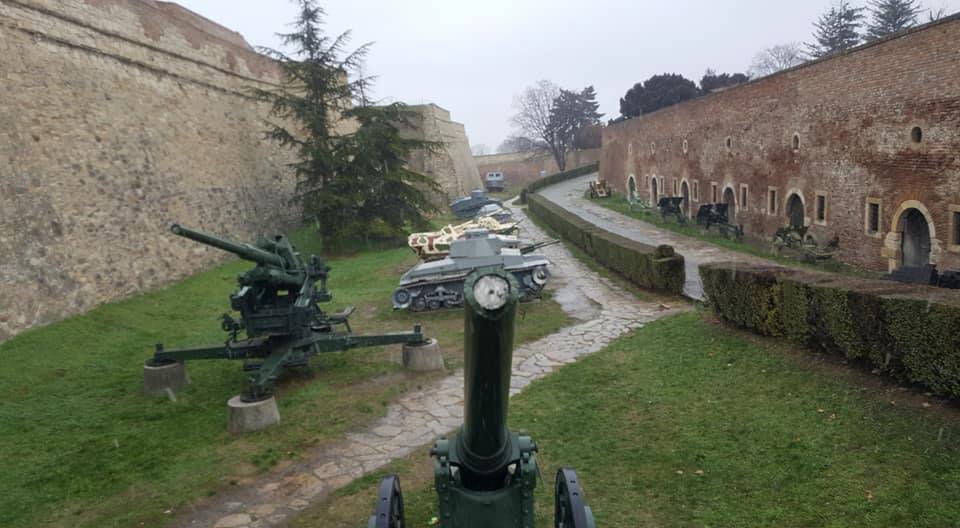
Military Museum
Placed in a wonderful surroundings of the Belgrade Fortress, Military Museum possesses a truly unique display of military related stuff from the period that covers more than thousand years of unsettling and troublesome history in the Balkans. The museum consists of a large building and surrounding open space.
The Military Museum resides in its present location since 1959. The building itself was constructed in 1924 for the purpose of holding the residence of Military Geographical Institute.
| Military Museum // More than 3000 objects depicting warfare in the Balkans across centuries | |
| Working hours: | 10 am - 5 pm, closed on Monday |
| Ticket: | 200 RSD (cca. 1.7 euros) |
| Detailed info: | Visit the Official Web-Site |

Museum of Ethnography
The Museum of Ethnography is one of the oldest institutions of such kind in Serbia. It was founded in 1901, and moved to present location at Students square in 1951. The building itself was constructed for the stock exchange before WWII. With its robust modern looks it really stands out in a classical surroundings of the Students square.
Architectural style: 20th Century Modern
Year of construction: 1934
Location: 13, Studentski Trg
The museum displays folk culture artefacts of various kinds, such as pieces from the household, jewlery, national costumes, old photos, ritual objects and so on. Manak's House museum also forms part of its dominion.
| Museum of Ethnography // Depicting everyday life of ordinary people in traditional Balkans | |
| Working hours: | 10 am - 5 pm (Tuesday to Saturday), 9 am - 2 pm (Sunday), closed on Monday |
| Ticket: | 200 RSD (cca. 1.5 euros) |
| Detailed info: | Visit the Official Web-Site |
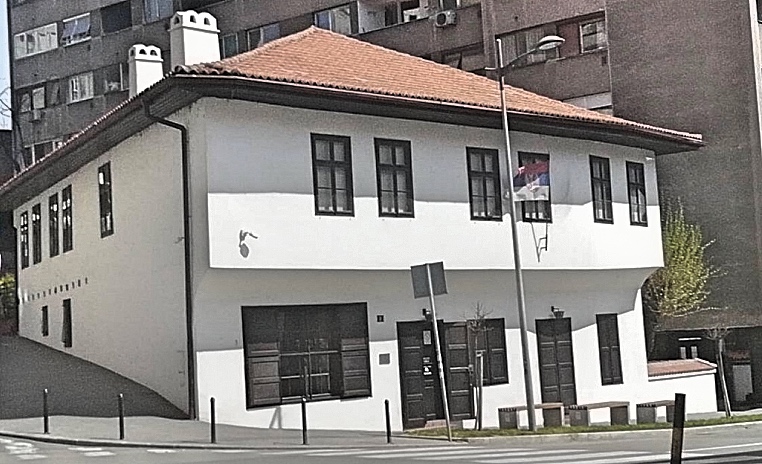
Manak's House
One of the oldest houses in Belgrade is Manak's house. It is located in Savamala historical district. Some argue that it was built as a post office during the reign of Prince Miloš Obrenović. Later it was converted into a tavern. Now it forms part of the Museum of Ethnography.
Architectural style: Serbian traditional
Year of construction: 1830
Location: 7, Gavrila Principa st.
The upper floor is reserved for the permanent exhibition of jewlery and traditional folk dresses from the region of central Balkans. The ground floor is used for temporary exhibitions. In the souvenir shop you can buy various pieces of old craftsmenship, marked by the logo of the Museum of Ethnography and labeled as "recommended".
| Manak's House // Traditional folk dress and jewellery of the central Balkans (19th thru mid-20th century) | |
| Working hours: | 10 am - 5 pm (Tuesday to Saturday), 9 am - 2 pm (Sunday), closed on Monday |
| Ticket: | 200 RSD (cca. 1.5 euros) |
| Detailed info: | Visit the Official Web-Site |
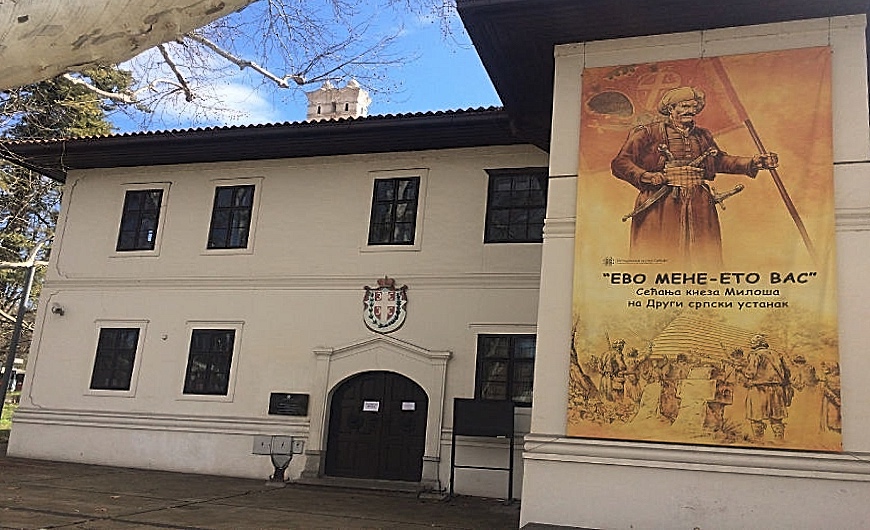
Prince Miloš Residence
Konak Kneza Miloša (The Residence of Prince Miloš Obrenović, the leader of the Second Serbian Uprising against the Turks) is an impressive royal residence, third of that kind built by Serbs in Belgrade.
Architectural style: Oriental with neoclassical elements on the facade
Year of construction: 1831
Location: 2, Patrijarha Pavla blvd., Topčider Park
According to the wish of Prince Miloš Obrenović, this residence was built far away from Belgrade's Fortress, where Turkish forces were stationed. It served as the court of the Principality of Serbia, many important decisions were made there and prince Miloš spent his last days in it. Today, The Residence of Prince Miloš is a museum, which houses permanent exhibitions about the life in Serbia in the first half of the 19th century and about Prince Miloš and the royal family Obrenović. It tells stories about turbulent Serbian history under the Turkish occupation and the constant aspiration of the Serbian people for independence. To its beauty, also, contributes one of the symbols of Belgrade - a stunning sycamore tree, more than 160 years old and 34m high, protected as natural rarity.
| Prince Miloš Residence // A folk leader's palace, hosted by the Historical Museum of Serbia | |
| Working hours: | 12 pm - 8 pm (Tuesday to Sunday), closed on Monday |
| Ticket: | 200 RSD (cca. 1.5 euros) |
| Detailed info: | Visit the Official Web-Site |
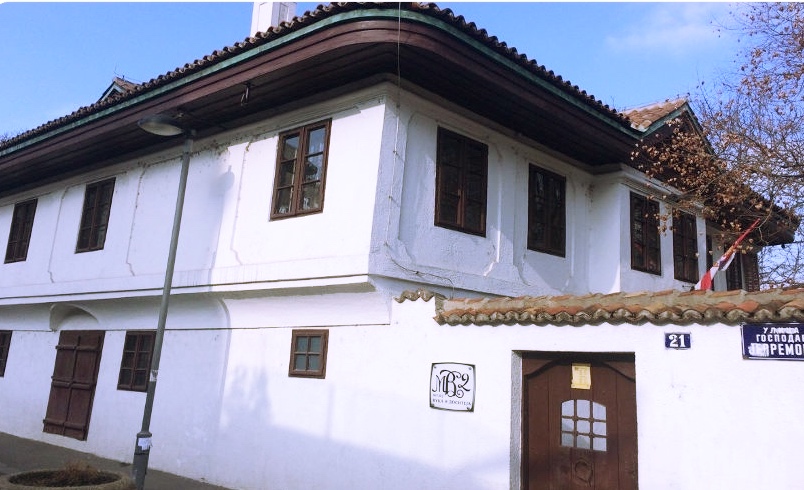
Vuk Karadžić and Dositej Obradović Museum
This oriental looking self-standing one story building houses the precious collection of belongings and documents of two greatest Serbian reformists, Vuk Karadžić (considered as the father of Serbian language) and Dositej Obradović (enlightener and first Minister of Education).
Architectural style: Balkan profane (Oriental)
Year of construction: 1739-89
Location: 21, Gospodar Jevremova st.
This is the oldest preserved Turkish civil building in Belgrade. In the nearby house, in 1808, Dositej Obradović founded the so called "Great School", which marked the beginning of modern education in Serbia. The museum was established in 1949.
| Vuk and Dositej Museum // Dedicated to two of the greatest Serbian enlighteners | |
| Working hours: | 10 am - 6 pm (Tuesday, Wednesday, Friday, Sunday), 12 pm - 8 pm (Thursday, Saturday), closed on Monday |
| Ticket: | 300 RSD (cca. 2.5 euros) |
| Detailed info: | Visit the Official Web-Site |
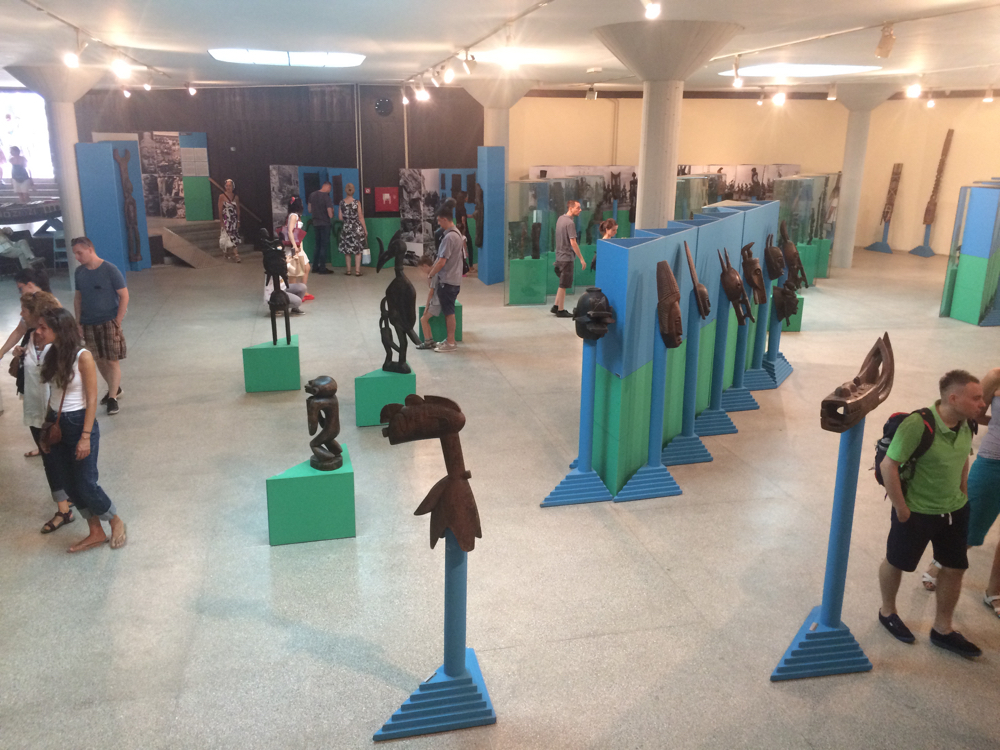
Museum of African Art
The Museum of African art is the first and only museum in the region entirely dedicated to the cultures and arts of the African Continent. It is located close to Topčider Park, at 14 Andre Nikolića street.
The museum was opened in 1977. The permanent display is predominantly oriented towards West African art, but there are many temporary exhibitions of various kind throughout the year.
| Museum of African Art // One of a kind experience of African culture and continent | |
| Working hours: | 10 am - 6 pm |
| Ticket: | 200 RSD (cca. 1.7 euros) |
| Detailed info: | Visit the Official Web-Site |
Jevrem Grujić House Museum
Jevrem Grujić House museum is located in Svetogorska street, next to the famous "Atelje 212" theater. It represents a spirit of an era, and It is a testimony of quotidian life in Belgrade in the late 19th and early 20th century.
Architectural style: Academism
Year of construction: 1896
Location: 17, Svetogorska st.
It is a two-storey house, a regular home, with all of its amenities, but richly decorated, with stylish furniture, many artworks, paintings and other pieces that form the legacy of Grujić family. Now it is possible for you to feel the atmosphere of being in a proper 19th century home, to turn back time, and to learn about the way of life, tradition and culture of Belgrade and its people.
| Jevrem Grujić House Museum // Take the step into the history, Serbian tradition, and the avant-garde | |
| Working hours: | 3 pm - 6 pm (Thursday, Friday), 11 am - 4 pm (Saturday, Sunday), closed on Monday, Tuesday, Wednesday |
| Currently: | Serbian Royal Portraits (until March 29, 2020) |
| Detailed info: | Visit the Official Web-Site |
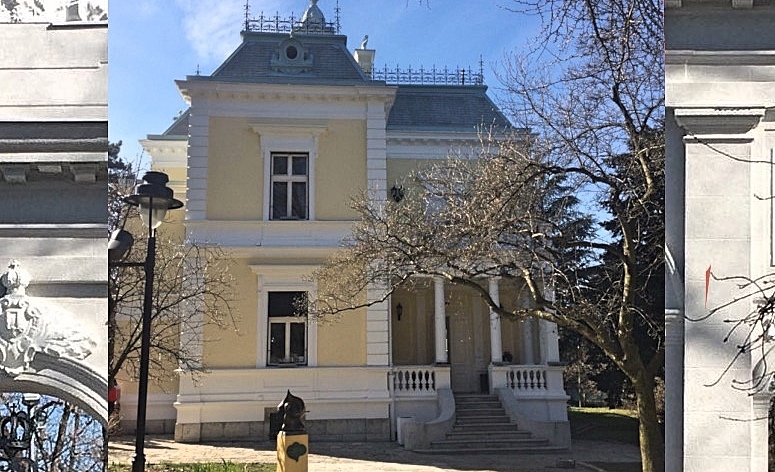
Museum House of King Peter I Karadjordjević
Originally, summer house of a merchant, Djordje Pavlovic, was used after the Great War (WWI), from 1919-1921, as the residence of King Peter (at the time he already passed the crown to his son, Alexander) because the Old Palace was severely damaged. Peter Karadjordjević died in this rented house, in 1921.
Architectural style: Academism with elements of Secession
Year of construction: 1896
Location: 40, Vase Pelagića st.
King Peter was the first Serbian king from Karadjordjević dynasty. He was crowned in 1903, and he ruled during one of the most turbulent periods in Serbia's history. Change of the dynasties, from Obrenović to Karadjordjevic, and political turmoil in the country after the assasination of King Alexander Obrenović and his wife in 1903 (known as the "May Coup"), the anexion crisis of 1908 (Austo-Hungary seizing control over Bosnia), the 1912-13 Balkan wars, the assasination of archduke Franz Ferdinand and the Great War (WWI) of 1914-1918 as a consequence were the political highlights at the time of his reign. Tormented, old and weiry after the final breakdown of central powers, he passed the crown to his son, regent Alexander. King Peter was a true "people's King" because he always shared misery of his compatriots, and he was loved like no other Serbian ruler. Soon after the death of King Peter, this house was redeemed and converted into his museum in 1924. The magnificent gate was constructed, with royal emblems. However, the museum itself was never opened until 2010. Now, it is a place that guards memory of King Peter through various kinds of his belongins which are displayed in the memorial rrom, but also it is a space for artistic exhibitions and promotions.
| Museum House of King Peter I // A 123-years-old villa transformed into a cultural hotspot and showroom | |
| Working hours: | 12 pm - 6 pm (Monday to Friday), 10 am - 2 pm (Saturday), closed on Sunday |
| Ticket: | |
| Detailed info: | Visit the Official Web-Site |
Jovan Cvijić Museum
The house of famous Serbian geographer and president of the Serbian Academy of Arts and Sciences, where he lived until his death in 1927, was converted into a memorial museum and opened for public in 1968.
Architectural style: Academism
Year of construction: 1905
Location: 5, Jelene Ćetković st.
The museum is famous for its interior decoration, ornaments on the walls and furniture. Some argue that this is maybe the nicest house interior in Belgrade. And that's pretty unexpected judging by the classical and calm looks of its exterior. This is one of very few houses in Belgrade urban area that still has its own proper yard. And there is still a so called "summer kitchen" out there. Inside, on display you can see numerous maps, handwritings, paintings, photographs, books, and other personal belongings.
| Jovan Cvijić Museum // A glimpse into the living space of great geographer and scholar | |
| Working hours: | 10 am - 5 pm (Tuesday, Wednesday, Thursday, Saturday), 10 am - 6 pm (Friday), 10 am - 2 pm (Sunday), closed on Monday |
| Ticket: | 200 RSD (cca. 1.7 euros) |
| Detailed info: | Visit the Official Web-Site |
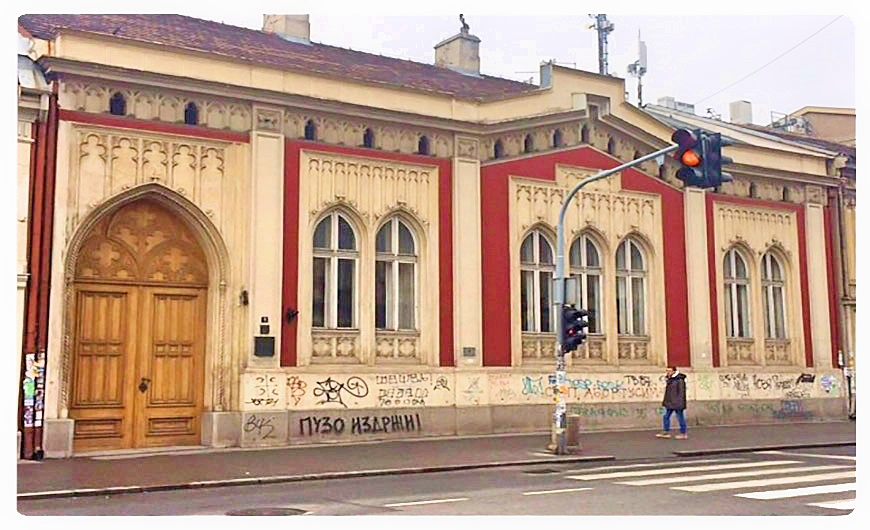
Spirta's House - Belgrade Home Museum
This building was constructed by Spirta family, of Greek origin, and as of 1965 it belongs to the Zemun Home Museum (branch of Belgrade City Museum), which shows the history of the district since it was founded back in the Roman days.
Year of construction: 1855
Architecture: Gothic
Location: 9, Glavna street, Zemun district
It's one of the most beautiful buildings in Zemun. The museum and the building are in the process of reconstruction, so it is closed for the public. The main attraction of the house was specially made parquet floor, which was worn out and now it is being reconstructed. It was made from 8 different kinds of wood, richly ornamented, and everything was handmande.
Sprirtas were a wealthy family. However, from all of their wealth, today only one pink crystal glass is left, that was used by the last mistress of the house.
 English (United Kingdom)
English (United Kingdom)  Srpski latinica (Srbija)
Srpski latinica (Srbija) 